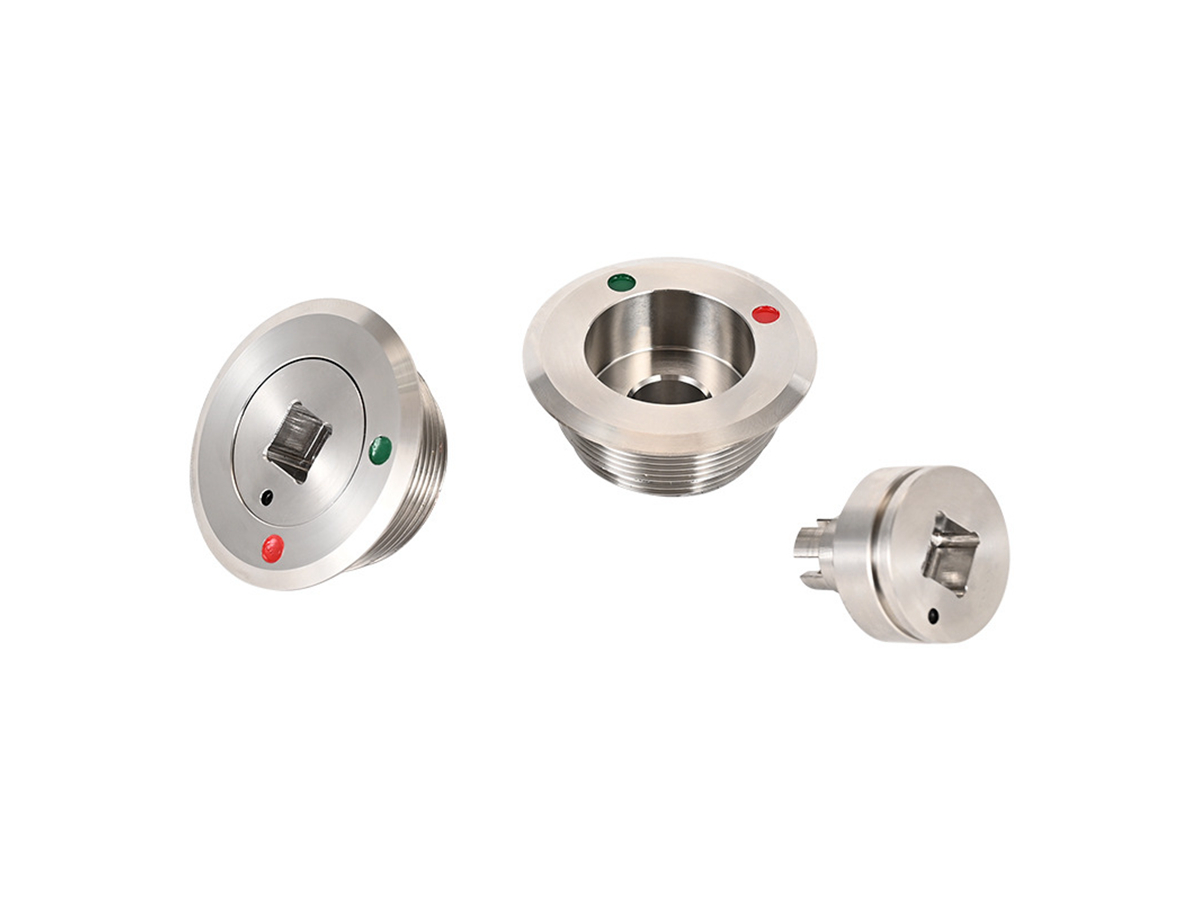Stainless Steel Machining in Aerospace: A Case Study on High-Performance Components
Introduction
Under extreme operational conditions, the aerospace industry demands materials that provide unmatched strength, corrosion resistance, and durability. Stainless steel alloys, particularly aerospace-grade 17-4PH, 316L, and 304, meet these stringent requirements and are widely utilized for critical aerospace components such as turbine parts, structural fittings, and precision fasteners.
Advanced CNC machining technologies significantly improve the manufacturing of stainless steel aerospace components. Precision CNC machining enables intricate geometries, extremely tight tolerances, and excellent surface finishes, significantly enhancing component reliability, operational efficiency, and overall flight safety.
Aerospace-Grade Stainless Steel Materials
Material Performance Comparison
Material | Tensile Strength (MPa) | Yield Strength (MPa) | Corrosion Resistance | Typical Applications | Advantage |
|---|---|---|---|---|---|
1000-1310 | 862-1172 | Excellent (≥1000 hrs ASTM B117) | Turbine blades, landing gear components | High strength, superior fatigue resistance | |
485-620 | 170-310 | Excellent (≥1000 hrs ASTM B117) | Hydraulic fittings, structural brackets | Superior corrosion resistance, weldability | |
515-720 | 205-310 | Very Good (~800 hrs ASTM B117) | Aircraft interior components, fasteners | Versatile, cost-effective, good machinability | |
620-830 | 240-450 | Excellent (~900 hrs ASTM B117) | Exhaust systems, high-temp components | Outstanding heat resistance, corrosion protection |
Material Selection Strategy
Selecting stainless steel alloys for aerospace applications involves precise evaluation based on mechanical and environmental requirements:
Components such as turbine blades and landing gear demanding exceptional mechanical strength (up to 1310 MPa tensile strength) and fatigue resistance choose 17-4PH stainless steel for superior performance in critical flight environments.
Hydraulic fittings and structural brackets needing exceptional corrosion resistance (≥1000 hours ASTM B117), combined with excellent weldability and moderate mechanical strength (up to 620 MPa tensile), benefit significantly from 316L stainless steel.
Versatile components, including interior fittings and structural fasteners requiring reliable strength (~720 MPa tensile), cost-efficiency, and good machinability, use 304 stainless steel for optimal balance and economic production.
High-temperature exhaust and heat-resistant structural components requiring robust corrosion protection (~900 hours ASTM B117) and excellent thermal stability are optimally produced from 321 stainless steel.
CNC Machining Processes
Process Performance Comparison
CNC Machining Technology | Dimensional Accuracy (mm) | Surface Roughness (Ra μm) | Typical Applications | Key Advantages |
|---|---|---|---|---|
±0.02 | 1.6-3.2 | Structural fittings, brackets | Cost-effective, consistent | |
±0.015 | 0.8-1.6 | Curved components, turbine supports | Enhanced accuracy, fewer setups | |
±0.005 | 0.4-0.8 | Complex turbine blades, precision parts | High precision, superior surface quality | |
±0.003-0.01 | 0.2-0.6 | Intricate aerospace components | Maximum accuracy, complex geometries |
Process Selection Strategy
Choosing CNC machining processes for stainless steel aerospace parts is determined by component complexity, accuracy demands, and application criticality:
Structural fittings, brackets, and simpler aerospace components requiring moderate precision (±0.02 mm) are efficiently manufactured using 3 Axis CNC Milling, ensuring cost-effective and reliable production.
Aerospace parts featuring curved geometries or requiring moderate complexity and improved accuracy (±0.015 mm), such as turbine supports, benefit from 4 Axis CNC Milling, minimizing setups and enhancing dimensional precision.
Critical, precision aerospace components such as turbine blades, compressor disks, and complex fittings demanding tight tolerances (±0.005 mm) and superior surface finishes (Ra ≤0.8 μm) employ 5 Axis CNC Milling for unmatched precision.
Highly intricate and performance-critical aerospace micro-components and parts needing the strictest tolerances (±0.003 mm) and complex geometries rely on Precision Multi-Axis CNC Machining for optimal functionality and safety.
Surface Treatment
Surface Treatment Performance
Treatment Method | Corrosion Resistance | Wear Resistance | Operating Temperature | Typical Applications | Key Features |
|---|---|---|---|---|---|
Excellent (≥1000 hrs ASTM B117) | Moderate | Up to 400°C | Hydraulic fittings, brackets | Enhances corrosion resistance, removes contaminants | |
Outstanding (>1000 hrs ASTM B117) | Very High | Up to 600°C | Turbine blades, precision components | High hardness, friction reduction | |
Excellent (~900 hrs ASTM B117) | Moderate | Up to 300°C | Interior fittings, precision valves | Ultra-smooth finish, improved corrosion resistance | |
Exceptional (>1000 hrs ASTM B117) | High | Up to 1150°C | Exhaust components, turbine blades | Superior heat resistance, extended component life |
Surface Treatment Selection
Surface treatment selection for aerospace stainless steel components requires precise alignment with operational and environmental factors:
Hydraulic fittings and structural brackets requiring excellent corrosion resistance (≥1000 hours ASTM B117) and clean, contaminant-free surfaces choose Passivation for reliability and compliance.
Precision aerospace components such as turbine blades and high-wear surfaces demanding high hardness (HV1500-2500), excellent wear resistance, and friction reduction use PVD Coating for superior operational performance.
Interior fittings, precision valves, and components requiring smooth surfaces (Ra ≤0.4 μm) and enhanced corrosion resistance select Electropolishing to optimize surface integrity and performance.
Turbine blades, exhaust systems, and components exposed to extreme heat requiring superior thermal stability (up to 1150°C) and high corrosion resistance benefit significantly from Thermal Barrier Coatings.
Quality Control
Quality Control Procedures
Comprehensive dimensional inspection using Coordinate Measuring Machines (CMM) and optical comparators.
Surface roughness analysis using precision profilometers.
Mechanical testing for tensile strength, yield strength, and fatigue properties as per ASTM standards.
Corrosion resistance validation using ASTM B117 Salt Spray Testing.
Non-destructive testing (NDT), including ultrasonic and radiographic inspections for defect identification.
Complete documentation adhering to AS9100, ISO 9001, and FAA aerospace manufacturing standards.
Industry Applications
Stainless Steel Aerospace Component Applications
High-strength turbine blades and compressor disks.
Robust landing gear components and structural fittings.
Corrosion-resistant hydraulic fittings and fluid connectors.
High-temperature exhaust and engine components.
Related FAQs:
Why is stainless steel essential for aerospace applications?
How does CNC machining improve aerospace component performance?
Which stainless steel grades best suit aerospace applications?
What surface treatments optimize stainless steel aerospace component durability?
What aerospace quality standards apply to CNC machined stainless steel parts?

